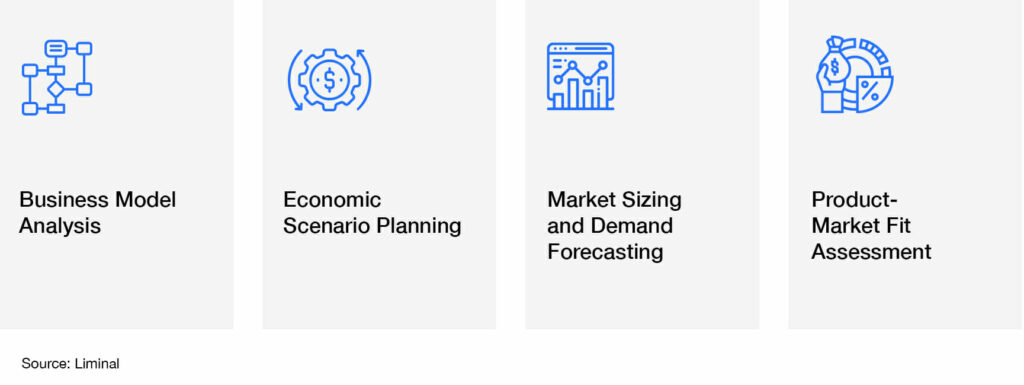
Digital Identity is Growing—Are You?
Before hiking in a national park, you can take a quick peek at the map posted at the trailhead. The red line will give you a general idea of the trail’s shape. Alternatively, you can use a digital map that shows your location and movement with GPS, even throwing in some notes about what you’ll see along the way.
Growth strategy comes in a similarly wide range of quality and definitions. To keep our clients on safe, rewarding paths to business growth, we typically ask three motivating questions:
- Where are you today? By the time you’re weighing growth options, you might already know the answer or at least most of the answer.
- Where do you want to go? The destination matters, so the key is to identify a future state that is more desirable than your current state and attainable.
- How are you getting there? The goal becomes attainable when you identify the gaps between you and your future state, and then find ways to step over or around those gaps.

Each question is a prerequisite for the next, and the real value comes after answering question number three. This is how Liminal answers all three questions to deliver meaningful outcomes.
1) Where Are You Today in your Business Growth Strategy?
Most of our clients have roughly 80% of this answer before they engage a firm like Liminal. If an advisory firm has to start from scratch and build out their knowledge of the vendor or marketplace, it can take months before they know the other 20%. Firms like Liminal, which specialize in a given market, can accelerate most of this discovery phase, but getting it right is critical to the success of any strategic planning.
We approach this question by first establishing your current position within the market by mapping your product features to solution segments and similar company profiles based on our proprietary matching logic. Once we have your relative position, we want to generate market trends and a competitive knowledge graph that includes demand forecasts, buyer sentiment, risks, and opportunities for your market segments. Lastly, we will size your current total addressable market and highlight your serviceable market based on current use cases.
Within a few weeks, we produce a market intelligence report and current state assessment of your business where we outline your current market position, the universe of competing and complimentary players, analyze shifting market dynamics to understand “where the puck is heading,” and size the market based on your product and GTM roadmap. Pulling together this work, you receive a complete understanding of your business, your value proposition, and any gaps you need to address.
Expected Outcomes:
An objective, comprehensive understanding of your business, product, and market position.
Throughout this phase, we complete the following artifacts:

As a result of this effort, you will receive a comprehensive report that establishes your current market position, evaluates your current products relative to peers, and sizes your market opportunity.
2) What Does a Successful Growth Strategy Look Like?
Whether you have a vision for where you want to go or not, a systematic approach to assessing potential paths forward highlights key opportunities and mitigates blind spots. The first step is to identify the internal and external capabilities you will need to continue serving your existing use cases. By starting with what makes you money today, we can feel confident that whatever we decide will continue to meet the expectations of your existing customers.
With our existing customers’ taken care of, we want to begin working through a new opportunity ideation process whereby we look at your current product features and assess how easily obtainable adjacent features can create new opportunities or strengthen existing offerings. In parallel, we will conduct market surveys and VOC calls to understand customer demand in adjacent markets.
With a set of ideas validated, the next step is to measure the penetration rate of the vendors in the market and analyze the whitespace opportunities across key geographies and verticals. To help us with this effort, we will develop a market prioritization model to help identify the markets you have the best right to win, estimated ROI, and the likelihood of success.
Given the expected changes to the marketplace over time, we need to figure out how long it will take to get to the future state. Once all opportunities and expected returns are laid out, priorities emerge, resulting in the following:
- Quick Wins (0-1 years) – What revenue opportunities are you leaving on the table today?
- Growth Strategy (1-3 years) – How can you enter a new vertical, acquire a strategic partner, or otherwise create the most possible growth in the medium term?
- Horizon Strategy (3-5 years) – Introducing entirely new elements to your business that don’t exist today.
With an idea of which journeys are worth the effort, it’s time to dive into the itinerary.
Expected Outcomes:
A deep understanding of where you can take your business, what obstacles may get in your way, what resources may be required to get there, and the economic outcome of your efforts.
- Business Model Analysis
- Economic Scenario Planning
- Market Sizing and Demand Forecasting
- Product-Market Fit Assessment

As a result of this effort, you will receive a growth opportunity assessment detailing several opportunities, including the business case, size of the opportunity, and potential challenges.
3) How Can You Get There?
We approach business growth strategy with the belief that your investment should support your business in getting from A to B to C. You should know about every gate you have to pass through, every big step on the way to the desired future state, and what risks you need to consider.
Oftentimes, we will determine the best path forward early on, whether that is building a new product, launching into new markets, finding the ideal partner opportunities, or acquiring new assets to move quickly. Once we have our path charted, it is all about execution.
The Smart Way to Grow with a Proven Growth Strategy
It should become clear how a business can move along each growth path over time and how the movement will change after adding new prongs to the strategy. Knowing the next step helps mitigate risks and maximize returns. Deep knowledge of the market leads to shortcuts others might miss.
The benefit of working with a firm with a deep domain presence is it’s like going to a new restaurant with a friend who knows about the secret menu. We can quickly tell you which partnerships make the best fit based on their product roadmap, which companies are considering exit opportunities, and which executives are looking to find their next role.
Expected Outcomes:
A comprehensive roadmap detailing each growth path highlights the strategic relationships worth making.
Below are a few tools leveraged during this phase:
- Strategic Partnership Frameworking
- Corporate Strategy Frameworking
- New Market Gap Analysis
- Target Scanning and Screening

Go Farther, Faster
With more efficient planning and discovery, more of a growth strategy engagement stays focused on the analysis that increases your ROI. Instead of spending 80% of the time paying a firm to teach them about your company’s current state and 20% of the time working on the problem statement at hand, work with a firm that can get up to speed quickly and be thoughtful about your business. There’s less time spent on the prerequisites upfront, which translates to faster delivery of the growth strategy you paid them to prepare.
Once we’ve landed on your growth strategy, we can continue supporting your team through execution with our go-to-market and transaction services.
What Do I Need to Grow Right Now?
Growth strategies are most useful when leaders are looking toward the long-term horizon and making plans for what the company should be when it reaches maturity. Before that point, a go-to-market strategy might be more appropriate, especially when a company is finding its footing.
If you are preparing for or thinking about fundraising in the near term, working with an independent, trusted advisor to help develop your growth strategy can sharpen your vision for the company and give potential investors comfort in the depth of your analysis.
You can read more about Liminal’s Growth Strategy practice.

